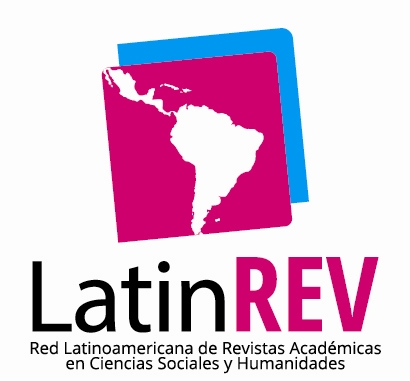

Guidelines for authors
Ensambles welcomes original research articles, in Spanish and Portuguese, for its sections:
In all cases the length includes bibliography and footnotes.
The journal adheres to APA (American Psychological Association, 7th edition) standards for style, citation and bibliographic references. The main criteria to be respected are detailed below:
1. Citation and bibliographical references.
The journal uses the author-date system established by APA standards (7th ed.) for citing sources in the body of the text and in the reference list.
In-text citations
References
Examples:
2. General format of the manuscript
3. Typographic use
A consistent and controlled use of typographic resources should be applied:
Title hierarchy
|
Level |
Suggested format |
|
Article title |
Bold, centered, body 14 |
|
First level (I., 1., etc.) |
Bold, left-aligned |
|
Second level (1.1, 1.2, etc.) |
Italic, left-aligned |
|
Third level (no numbering) |
Round, in paragraph, with colon: E.g. Justification: Objective.... |
4. Other elements
5. Presentation and submission
These instructions are based on the citation format of the American Psychological Association (APA). For more details concerning this citation form, please consult http://www.apastyle.org/index.aspx.
Acknowledgment of authorship (CRediT)
Those who submit a contribution for publication in this journal should bear in mind that the manuscript must have been read and approved by all signatories and that each of them must agree to its submission to the journal.
Acknowledgment of authorship should be based on: 1) significant contributions to the conception and design of the study or the collection, analysis, and interpretation of data; 2) drafting the article or critically revising substantial intellectual content; 3) final approval of the version to be published. In original articles, authorship and participation roles must be declared in accordance with the CRediT taxonomy:
Contributors who do not meet the criteria for authorship should be included in the acknowledgments. All academic collaboration roles are described in the CRediT taxonomy (hdlab.space/taxonomia). All authors must be listed at the time of submission.
This information is added at the end of the article under a subtitle Contribution, here is an example:
Contribution of authorship roles
Juana María (https://orcid.org/0000-0003-xxxx-xxxx) and Susana Pérez (https://orcid.org/0000-0003-xxxx-xxxx) contributed to the conception of the idea and design of the study; Nora González (https://orcid.org/0000-0003-xxxx-xxxx) participated in the research process and data collection; María Domínguez (https://orcid.org/0000-0003-xxxx-xxxx) contributed to the analysis and interpretation of the data. All authors contributed to the writing of the article, approved the final version for publication, and are able to respond to all aspects of the manuscript.
Política de sección por defecto
Esta sección se propone reunir textos que dialoguen en torno de una misma temática, retomando los debates actuales en sociedad, política, economía y cultura, tanto locales como regionales o internacionales. Busca crear un espacio que multiplique las miradas sobre una misma problemática, a través de investigaciones que reflejen la diversidad de enfoques, contextos, perspectivas disciplinarias o dispositivos metodológicos con la que puede ser abordada. En esta puesta en común, en los cruces, los intercambios, los puntos de contacto y de diferenciación esperamos hacer surgir nuevos interrogantes y pistas de reflexión.
Esta sección contará con un coordinador cuyas investigaciones estén vinculadas con la temática propuesta en cada número. Su rol será definir y organizar la convocatoria, así como contribuir a multiplicar las voces que participen en el debate.
Esta sección se encuentra destinada a la publicación de todos aquellos artículos que aborden discusiones y temáticas que no estén comprendidas en la convocatoria del Dossier. Textos ensamblados es un espacio abierto a colaboraciones acordes a la línea editorial de la revista ya sea bajo la forma de artículos sobre cuestiones de coyuntura, resultados de investigaciones o discusiones clásicas de ciencias sociales.
En esta sección se presentan reflexiones sobre la “cocina” de los trabajos de investigación: los imprevistos y obstáculos experimentados en el proceso, las redefiniciones que tuvieron lugar, la distancia entre lo planeado y lo realizado, las influencias de la propia posición social en la producción, las dificultades con las que se encontraron y la manera de sortearlas. Convocamos a quienes quieran realizar un ejercicio de reflexividad sobre la forma en que los problemas epistemológicos, metodológicos y/o ético-políticos se vuelven fuente de conocimiento en la práctica de investigación en ciencias sociales.
Esta sección se propone explorar problemáticas de las ciencias sociales a partir de otras miradas y abordajes. La literatura, la fotografía, la crónica periodística, el arte y las prácticas culturales en general han retratado la realidad social a través de diversos soportes y técnicas.
Con Otras Texturas nos proponemos contribuir a la construcción de un espacio de debate e intercambio donde las ciencias sociales dejen de lado la especificidad de su discurso para abrir el juego a diversas producciones del campo cultural.
Invitamos a participar a todos aquellos que expresen lo social desde otras sensibilidades y lenguajes.
En esta sección esperamos recibir contribuciones que propongan una clave de lectura personal sobre un libro relevante de reciente aparición, así como textos cuyas miradas atraviesen más de una obra. La intención de la contraseña es convocar voces personales, controvertidas, cómplices sobre textos que graviten en la escena de las ciencias sociales ya sea por los contenidos que tratan, por la coyuntura de su edición o por la particularidad del enfoque.
Esta sección se propone hacer accesible al lector textos aún inéditos en castellano que pueden o no estar vinculados a la temática del dossier.
Those who publish in this journal accept the following conditions:
The names and email addresses entered in this journal site will be used exclusively for the stated purposes of this journal and will not be made available for any other purpose or to any other party.


ISSN versión impresa: 2422-5444
ISSN en línea: 2422-5541
Esta obra está bajo una licencia internacional Creative Commons Atribución-NoComercial 4.0.

Juan María Gutierrez 1150 (entre José León Suarez y Verdi) C.P. 1613
Los Polvorines - Pcia de Bs. As. - Argentina
(54 11) 4469-7507
ediciones@campus.ungs.edu.ar
http://ediciones.ungs.edu.ar
Redes: Ediciones UNGS